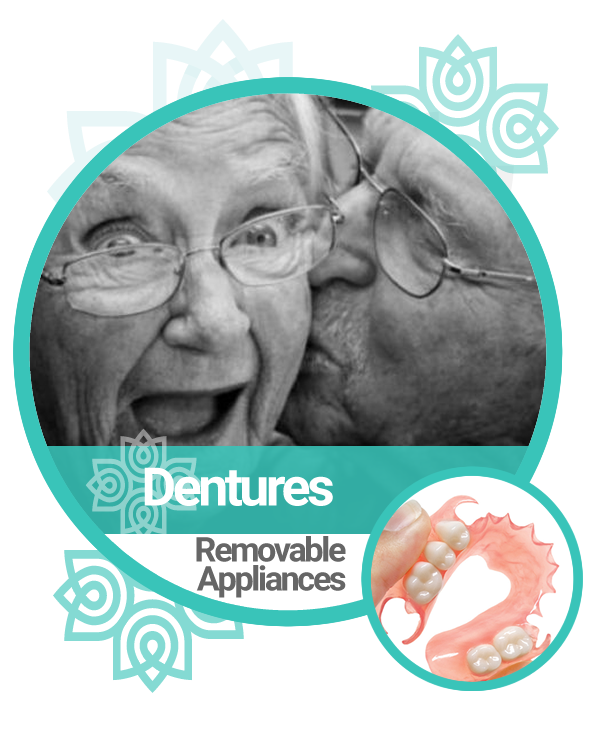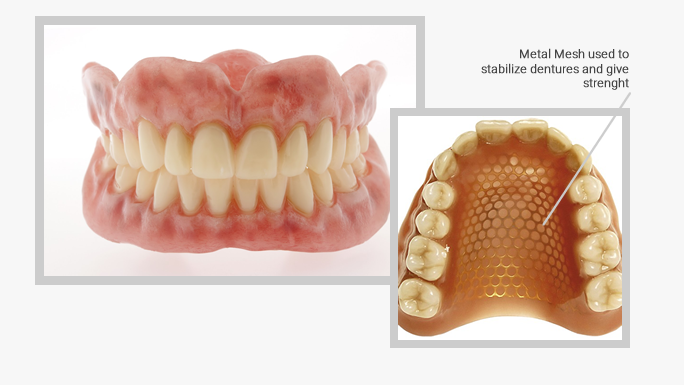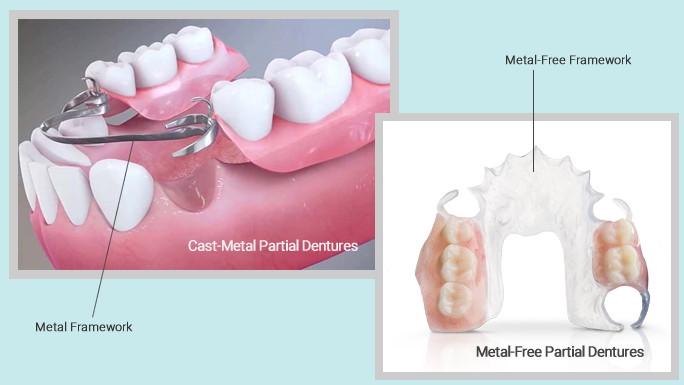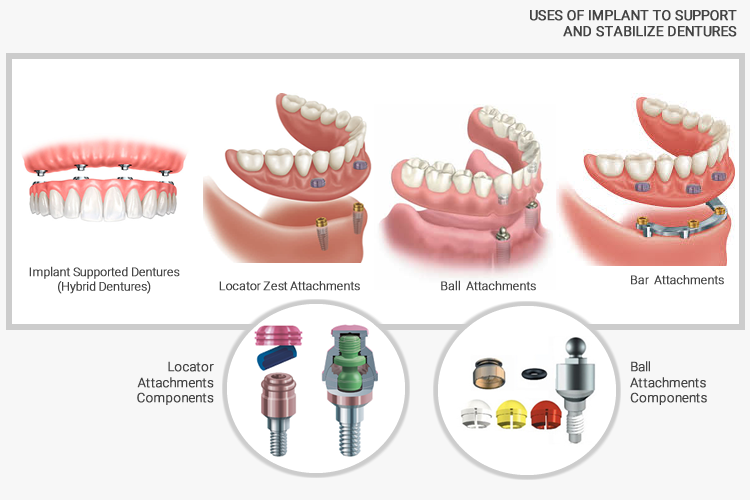
REMOVABLE APPLIANCES / DENTURES
DENTURES ARE ARTIFICIAL TEETH AND GUMS THAT ARE FORMED TO YOUR MOUTH AND CREATED TO REPLACE LOST OR REMOVED NATURAL TEETH.
Dentures, also known as false teeth, are prosthetic devices constructed to replace missing teeth; they are supported by the surrounding soft and hard tissues of the oral cavity.
Conventional dentures are removable. However, there are many different denture designs, some which rely on bonding or clasping onto teeth or dental implants. There are two main categories of dentures, the distinction being whether they are used to replace missing teeth on the mandibular arch or on the maxillary arch.
DENTURES CAN HELP WITH
| Mastication, as chewing ability is improved by replacing edentulous areas with denture teeth. | |
|---|---|
| Aesthetics, because the presence of teeth gives a natural appearance to the face, and wearing a denture to replace missing teeth provides support for the lips and cheeks and corrects the collapsed appearance that results from the loss of teeth. | |
| Pronunciation, because replacing missing teeth, especially the anterior teeth, enables patients to speak better. | |
| Self-esteem, because improved looks and speech boost confidence in the ability to interact socially. | |
| To replace misshaped or severely discolored teeth to make cosmetic modification |
FULL DENTURES FACTS
- Aesthetic Enhancement: Full dentures can replace missing teeth, restoring your smile and facial aesthetics, which can boost your self-confidence.
- Functional Improvement: Dentures improve your ability to chew and speak, allowing you to enjoy a wider range of foods and communicate more effectively.
- Affordability: Compared to some other tooth replacement options like dental implants, full dentures are generally more affordable upfront.
- Non-Invasive: Getting dentures doesn’t involve surgical procedures, making it a suitable option for individuals who may not be suitable candidates for dental implants.
- Quick Solution: Dentures can be created relatively quickly, meaning you can have a functional and aesthetically pleasing smile in a shorter amount of time compared to other treatments.
- Adjustability: Dentures can be adjusted or relined as needed, which can help accommodate changes in your mouth over time.
- Chewing Limitations: While dentures improve chewing compared to having no teeth, they may not provide the same chewing efficiency as natural teeth or other dental solutions like implants.
- Speech Issues: Initially, you might experience difficulty speaking with dentures as your mouth adjusts to the new prosthetic. However, this typically improves with practice.
- Maintenance: Dentures require regular cleaning and maintenance to prevent issues like bad breath, staining, and irritation of the gums.
- Gum and Bone Changes: Over time, wearing dentures can lead to changes in the shape of your gums and jawbone, which may necessitate adjustments or replacements.
- Comfort Concerns: Some individuals find dentures less comfortable than their natural teeth, particularly during the initial adjustment period.
- Adhesive Dependency: Denture wearers often rely on adhesive products to secure their dentures in place, which might not offer the same stability as other tooth replacement options.
- Social Concerns: There can be a social stigma attached to wearing dentures, although attitudes are changing as more people choose cosmetic dentistry.
- Risk of Slippage: While well-fitted dentures can be stable, there’s always a possibility of slippage or movement, especially during activities like eating or speaking.
PARTIAL DENTURES FACTS
- A removable partial denture or bridge usually consists of replacement teeth attached to a pink or gum-colored plastic base, which is sometimes connected by metal framework that holds the denture in place in the mouth. Partial dentures are used when one or more natural teeth remain in the upper or lower jaw.
| When you are missing one or more teeth, the bite pressures shift in your mouth. Other teeth may begin to move to compensate for the “gap” in your bite, and you may experience shrinking of both the soft tissues and the supporting bone near your missing teeth. This can alter your physical appearance and can lead to subsequent problems with your other teeth. A partial denture keeps the underlying structures of your mouth – your gums, jawbone, facial muscles, etc. – active and engaged. It helps prevent further shifting of the other teeth in your mouth, while giving you the confidence of having a beautiful, complete smile. | |
|---|---|
| Partial dentures are a less-invasive option that also tends to be less expensive than other options for replacing missing teeth. They do require a bit of maintenance but are easy to get used to and, for many patients, do an excellent job of restoring beauty and functionality to that part of their mouth. |
FLEXIBLE PARTIAL DENTURES FACTS
- A cast thermo plastic denture that is thin, lightweight, and flexible with invisible clasps that surround the natural teeth. Flexible partials are a quality premium product that offer the benefits of superior esthetics, comfort, function and bio-compatibility.
| ESTHETIC – the translucent material blends naturally with the tissue tone and replaces clasps | |
|---|---|
| COMFORTABLE – thin, lightweight and resilient with precision fit and retention | |
| BIO-COMPATIBLE – non-allergenic, monomer and formaldehyde free | |
| FUNCTIONAL – flexible to create a stress-breaker effect, with no minor or major connectors to collect food or affect speech. |
USES OF IMPLANTS TO SUPPORT DENTURES
A thin metal bar that follows the curve of your jaw is attached to two to five implants that have been placed in your jawbone. Clips or other types of attachments are fitted to the bar, the denture or both. The denture fits over the bar and is securely clipped into place by the attachments.
(stud-attachment dentures) — Each implant in the jawbone holds a metal attachment that fits into another attachment on the denture. In most cases, the attachments on the implants are ball-shaped (“male” attachments), and they fit into sockets (“female” attachments) on the denture. In some cases, the denture holds the male attachments and the implants hold the female ones.
Hybrid implant dentures consist of dentures that are fixed onto implants. These dentures use prosthetics to replace full rows of teeth. The dental implants support a titanium or gold bar that anchors a set of acrylic teeth in place. The bar is permanently fixed in one place which means your dentures won’t move around.























